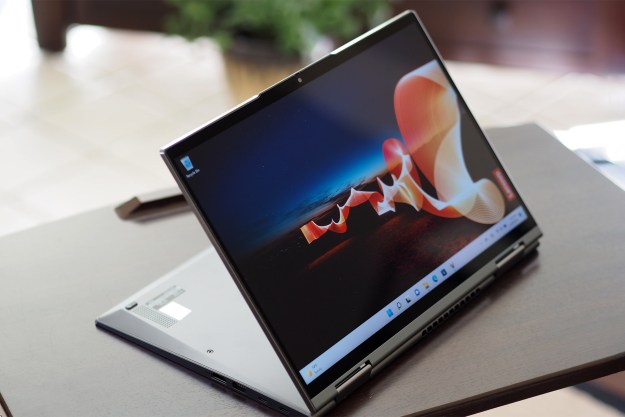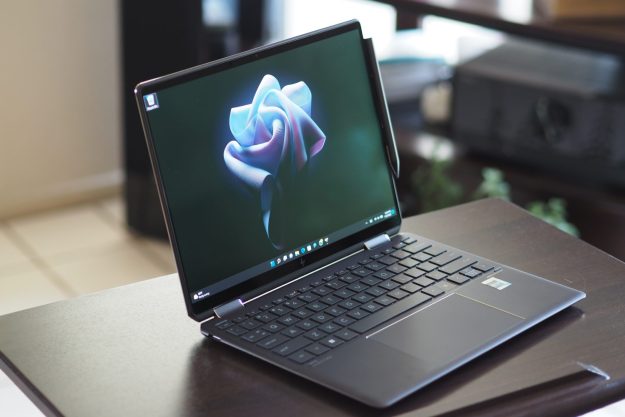I just got two systems in from Intel and AMD and they are pretty sweet. The AMD is the new Spider/Phenom platform which was followed last week by the ATI 3870 X2 card which currently is the fastest single graphics card on the market. The Intel is a full quad core system named Skulltrail that will take 4 graphics cards as long as they aren’t double wide cards; it is an engineering master piece. Last year I looked at earlier versions of these boxes and both are strong improvements.
Both of these systems are nicely turned out. But they also showcase the advantages and disadvantages of both companies.
Intel: Processor Powerhouse but Dependent on NVIDIA
It comes as no surprise that Intel’s strength is in the motherboard and processor. This is one of the few systems that will take 4 graphics cards and it has 8 cores using 2 production quality high performance CPUs. Its strength is shear processing power; its weakness is the dependency on NVIDIA to finish the solution with their high-end graphics cards. In this case two very nice 8800 GTXs which represent the highest performing “shipping” twin card graphics solution.
This new V8 should be a powerhouse when it comes to processing but I’m still having difficulty finding applications that will use 4 cores let alone 8 and, when I ask, developers continue to tell me there simply aren’t enough 4 core systems to develop for let alone 8 core systems.
Still, unlike last year’s V8 which was more of a science experiment, this is a day-to-day work horse and the only thing I’m finding annoying about it is an overly noisy power-supply fan. It has Zallman fans on the processor and 7 case Fans which are all very quiet but the darned fan in the Turbo Cool 1KW SLI power supply is way too noisy. Intel doesn’t build the power supply, but it points to the need to not just buy on spec but look into how the system builder configures the system before you buy.
AMD: The ATI Merger is Key
I effectively got in two AMD systems. Initially they had just sent a motherboard and processor and eventually they sent a complete system. The one I built was the first system I tried Windows Vista SP1 on because I had issues getting Windows Vista Gold to install on it. I also swapped out the single 3870 card with the new HD 3870 X2 card which is currently knocking out the NVIDIA 8800 for the top performance space. This is basically two ATI cards filling one slot with on-board Crossfire. The impressive thing about this system isn’t the processor, (we are still waiting for the higher speed versions of Phenom to ship) but this new one card Crossfire solution and the end result feels like a more cohesive effort with the same vendor on both the graphics and the processor.
Once you can use two of these cards (expected release in March) you will get the equivalent of 4 cards in what is a tighter configuration than the Intel box, but that solution isn’t shipping yet and future dates are often unreliable.
Still you begin to get a sense from this as to what will be coming from AMD once they get both groups to work even more closely together.
Comparing the Two Solutions
Both companies went though a lot of trouble preparing these machines, the AMD box was hampered by a loud processor fan which were easily replaced, the Intel by a noisy power supply fan which won’t be that easy (given a really nice wiring job) to replace. If you buy one of these things yourself I’d actually see if I could hear one first as I’ll bet different system builders will be all over the map and, trust me, a quiet system is worth taking some extra trouble to find. Both systems are blazing fast, but obviously it’s overkill at this point, and nothing more than a technology showdown.
Looking Forward
NVIDIA is the wild card for Intel and getting the merger to the point where it is more of an advantage than a disadvantage is AMD’s challenge. To win decisively Intel needs NVIDIA to step up sharply and address this new competitive threat because right now graphics performance, to most high performance desktop buyers, is more important than processor performance. On the other hand, twin 8800s should be able to outperform a single 3870 X2 because they will outperform twin 3870s. This means getting two 3970 X2ss to work together before NVIDIA can bring out and enable SLI on their own as yet unannounced twin core card is incredibly important if AMD wants to hang on to the top spot.
Intel’s reliance on NVIDIA has resulted in solid benefits though most of 2007, but a lot of the gaming problems with Vista were with NVIDIA cards. But both NVIDIA and Intel have been having some issues with Microsoft while AMD seems to be much closer right now. As we move from Vista SP1 to Windows 7 this could become an increasing competitive differentiator between the two efforts.
Which to Buy, and Wrapping Up
These are really very different systems, the new Intel V8 is well ahead of the curve in terms of processor performance and you’d likely find a much better value with a single Quad core solution using either Intel or AMD right now. However, if you need 8 cores and want something that is consumer friendly with the most powerful consumer processors and the possibility of 4 graphics cards Skulltrail is for you. That’s a lot of “ifs” though.
The AMD Spider platform is far more practical and holds up well against similarly configured and priced Intel boxes. Their Cool and Quiet capability actually seems to work reasonably well if you, or the system builder, don’t use excessively noisy fans. Performance until the full speed Phenom processors start shipping in a few weeks will fall behind Intel on the processing side, but for a single card solution nothing can touch the 3870 X2 right now.
Personally I’d hold off until Vista SP2 actually starts to ship (expected mid February), yes SP1 is actually that much better on new hardware, and then I’d evaluate on a system level unless I was building one of these myself. This is because memory speed, hard drive performance, and system noise will likely make a big difference between system builders. One of the big system speed boosts in the next few months should come from the availability of more reasonably priced solid state drives and putting your applications and OS on one of them could make a huge difference in how fast a system feels and how noisy it is.
If I was building a system I’d start with the graphics card right now and back into the processor given gaming is where I’d personally see the bigger advantage. If you favor ATI I go AMD, if NVIDIA I’d go Intel and which I’d favor might have a lot to do with what games I like to play.
In the end, the competition between Intel and AMD, at least on the desktop (Intel remains preeminent currently on laptops) is increasingly dependent on graphics and that, once again, probably goes a long way towards explaining just why AMD felt they had to buy ATI. With the 3870 X2 you get a hint that it just might pay off.
Editors' Recommendations
- Lenovo just knocked 40% off this ThinkPad X1 Yoga 2-in-1 laptop
- Dell XPS 14 vs. HP Spectre x360 14: which should you buy?
- Here’s a shocking reminder of just how far ahead Intel is in race with AMD
- The best processors in 2024: AMD and Intel CPUs duke it out
- What’s the best CPU under $400? Here are Intel and AMD’s best options


